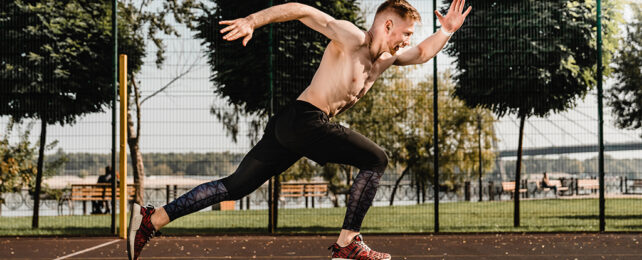Bad news for any extreme exercise junkies out there: excessive vigorous exercise could muffle your immune system. At least, that's what a study analyzing over 4,700 post-exercise fluid molecules from firefighters suggests.
This may be problematic for workers with consistently physically demanding jobs that require intense fitness training, such as emergency workers and athletes.
"People who are very fit might be more prone to viral respiratory infection immediately after vigorous exercise," suggests Pacific Northwest National Laboratory (PNNL) biomedical scientist Ernesto Nakayasu. "Having less inflammatory activity to fight off an infection could be one cause."
While there is strong evidence to suggest that moderate physical activity among healthy individuals can favor the immune system in the long run, what happens to the immune system directly following vigorous exercise is controversial.
There is little reliable evidence that supports the claim that intense exercise heightens the risk of opportunistic infections, although a few previous studies have noted self-reported upper tract respiratory infections in athletes, compared to control groups, after strenuous activities. Whether these are correlations or causations is unknown.
So Nakayasu and colleagues tested the blood plasma, urine, and saliva, from 11 firefighters before and after 45 minutes of intense exercise hauling up to 20 kilograms (44 pounds) of gear over hilly terrain.
"We wanted to take an in-depth look at what's happening in the body and see if we're able to detect danger from exhaustion in its earliest stages," explains PNNL bioanalytical chemist Kristin Burnum-Johnson. "Perhaps we can reduce the risk of strenuous exercise for first responders, athletes, and members of the military."
There's no question exercise does wonders for our health, from boosting moods to strengthening our immune systems. But as in previous studies, the new research detected possible signs of immune suppression within the worked-out firefighters.
Amidst the expected physical changes helping our bodies maintain the increase in fluids, energy, and oxygen that exercise demands, there was a decrease in molecules involved in inflammation. This was accompanied by increased opiorphin, a dilator of peripheral blood vessels.
What these changes ultimately mean for the short-term function of the immune system is unclear, but the researchers have a few ideas.
"[Opiorphin] may increase blood flow to muscles during the exercise regimen to improve the delivery of oxygen and nutrients," the team write in their paper.
"We postulate that the decrease in inflammatory molecules we observed in the saliva after exercise might represent an adaptive mechanism to improve gas exchange in response to higher cellular oxygen demand."
There was change in the participants' oral microbiome too. The scientists suspect this was due to the increase in antimicrobial peptides found in the firefighter's mouths after their intense activity, possibly to compensate for the immune suppression, although this conclusion is contested.
"However, this increase in antimicrobial peptides had no effect on inhibiting E. coli growth," Nakayasu and colleagues elaborate, "suggesting a limited capacity of antimicrobial peptides within the oral cavity to protect against host infections."
That said, other scientists argue some of the changes observed may not be indications of immune suppression but of a "heightened state of immune surveillance and immune regulation".
While a within-subject comparison reduced the impact of their small sample size, firefighters experience unique exposures to pollutants during fires which may also change their immune reactions. What's more, this study only considered healthy and active men, the researchers caution, so further research amongst a broader community is needed to confirm their findings.
However, taken with previous studies, "there is evidence supporting a relationship between physical demands and a higher incidence of respiratory infections," Nakayasu and team conclude.
This research was published in Military Medical Research.
